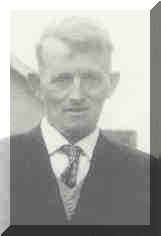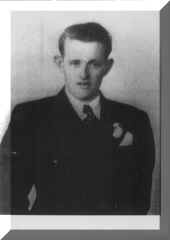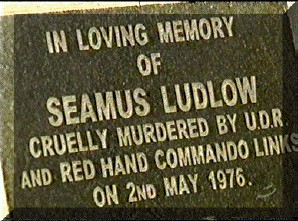The Murder of Seamus Ludlow in County Louth, May 1976. Towards a public inquiry?



The Murder of Seamus Ludlow in County Louth, May 1976. Towards a public inquiry?
|
|
Introduction to the murder of Seamus Ludlow and the official cover-up. Michael Cunningham investigation - 1978 The recent Campaign for Truth and Justice. Irish Victims Commission Report. Ludlow family's questions for the RUC (now the PSNI). Jim J. Kane's letter to the N I Human Rights Commission. Jim J. Kane's letter to the RUC Ludlow Family Letter to Bertie Ahern Other Ludlow Family Sites. |
The Sunday Times, 2 May 1999: RUC probes claims of police collusion with terrorists by Liam Clarke A team of RUC detectives is studying allegations by John Weir, a former police sergeant who served 14 years for his part in a sectarian murder, that there was widespread collusion between the force and loyalist terrorists in the mid-1970s. The claims, first published in The Sunday Times, are also being investigated by gardai who are looking for a link between rogue policemen and the 1975 bombing of Dublin and Monaghan which killed 33 people. Later this month, the Northern Ireland director of public prosecutions is expected to decide whether to prosecute a number of men for the part they are alleged to have played in the murder of Seamus Ludlow near Dundalk in 1976. They can be charged north of the border because they planned their crime there. Jimmy Sharkey, Ludlow's nephew, said four loyalists from North Down have been identified as suspects in a file given to the DPP by the RUC. One is believed to have been a security force informant. Two others were members of the Ulster Defence Regiment. After the killing Gardai told the family that the IRA had been responsible. It is now accepted that the murder was carried out by a loyalist gang which was hunting for a local republican who bore a strong resemblance to Ludlow. Sharkey said at the weekend: "It is a cover-up by authorities on both sides of the border." He believes the four suspects were liaising with Robin Jackson, a notorious loyalist assassin, and Robert Nairac, an undercover British Army intelligence officer, as part of an operation to kill their intended target. Jackson died last year and Nairac was murdered by the IRA a year after Ludlow's death. Some nationalists and loyalists have claimed in recent months that Nairac was involved in terrorist crimes. Weir has made numerous allegations about Jackson, who was nicknamed "the Jackal". For example, he said Jackson took part in the 1977 murder of William Strathearn, a Catholic civilian, for which Weir and another police officer were jailed. The RUC have been given a file by Weir alleging collusion between Jackson and other loyalists and members of the police, UDR and British military intelligence. Associates of Jackson have told The Sunday Times that they believed he was a British military intelligence agent in the 1970s and early 1980s. Jackson, a former UDR member himself, had many friends and contacts in the regiment. The Law Society of Northern Ireland is pressing for independent inquiries into the killings of Pat Finucane and Rosemary Nelson, two solicitors killed by loyalists. The Sunday Times has learnt that two military intelligence officers, a man and a woman, knew of the UDA plan to kill Finucane and that they did not pass on intelligence to the police. They learnt of the plot from Brian Nelson, a UDA intelligence officer who was working as a double agent for the army, but did not pass on details to the police and took no action to save the solicitor's life. A senior security source said: "These two people went Awol; they were running their own agenda which seemed to include helping the UDA to target what they considered were the 'right people'. In other words choosing who should live and who should die." John Stevens, the deputy commissioner of the Metropolitan police, discovered the role of the two handlers and forwarded a file to the director of public prosecutions which recommended that they should be charged with conspiracy to commit murder. Stevens is now back in Northern Ireland to re-examine the case. He told The Sunday Times: "there were a number of matters of concern which were all included in my file to the DPP." He said his team of detectives had started door-to-door inquiries in the Antrim Road area where Finucane was killed. A common denominator in the disputed killings is that they all featured earlier in reports compiled by British Irish Rights Watch. BIRW is an independent monitoring body based in London, which offers its services to anyone whose human rights have been affected by the Northern Ireland conflict, regardless of religious, political or community affiliation. The body, which is headed by Jane Winter, a solicitor, specialises in compiling impartial accounts, based on publicly available information and on interviews. The reports themselves are closely researched and each fact is carefully sourced. It was a BIRW report on the alleged intimidation of Rosemary Nelson that prompted the Independent Commission for Police Complaints to investigate. A report on the death of Seamus Ludlow, which was compiled in February, was among papers forwarded to the Northern Ireland DPP. A third report on the killing of Finucane prompted the decision to call in Stevens to reinvestigate the case.
I Homepage I I Top I I Press Coverage I |